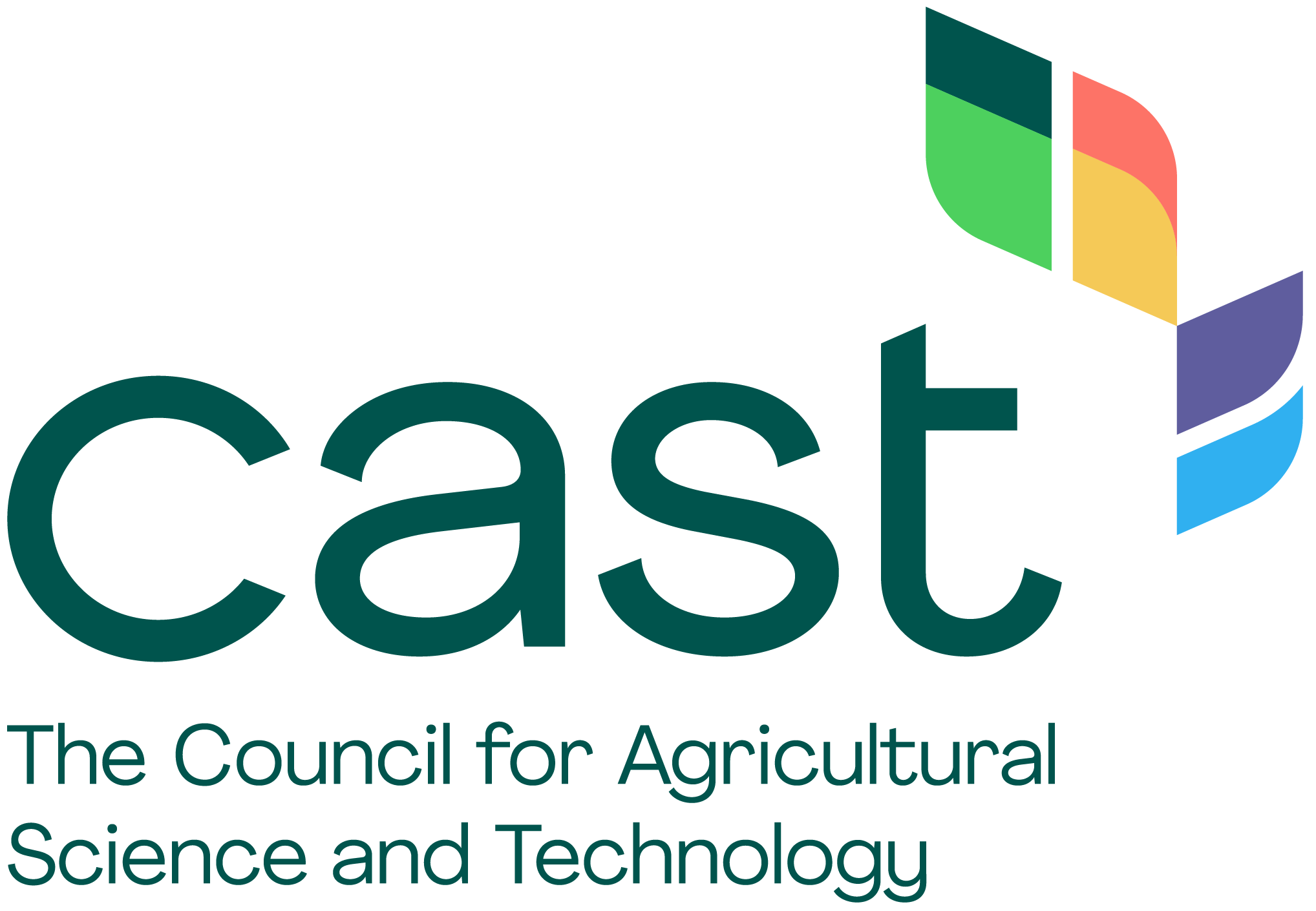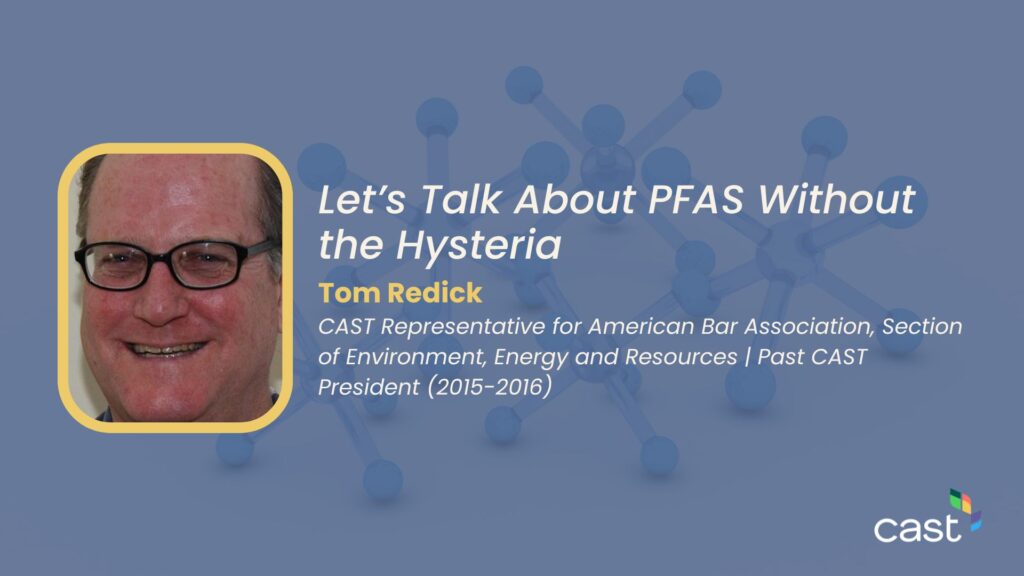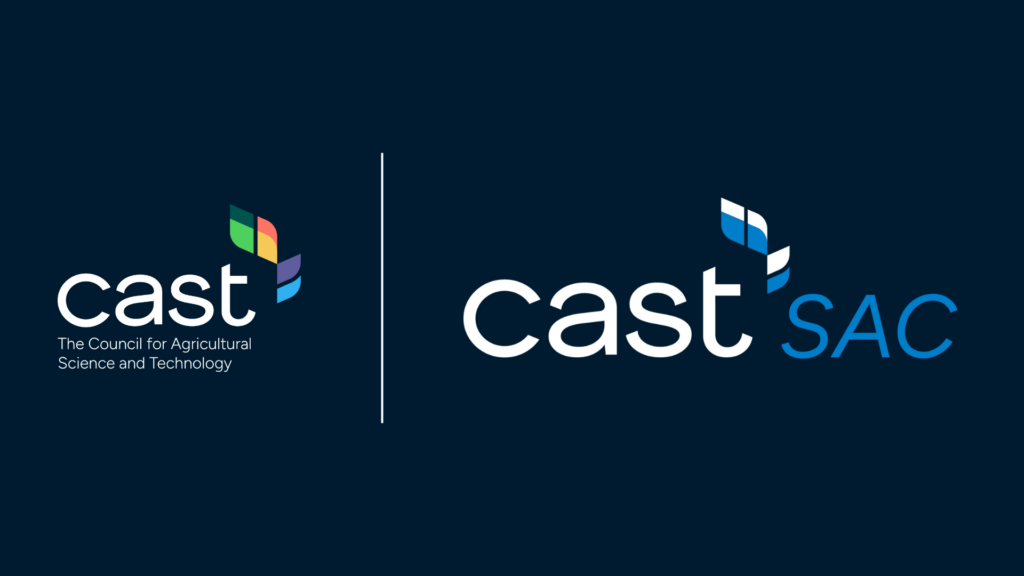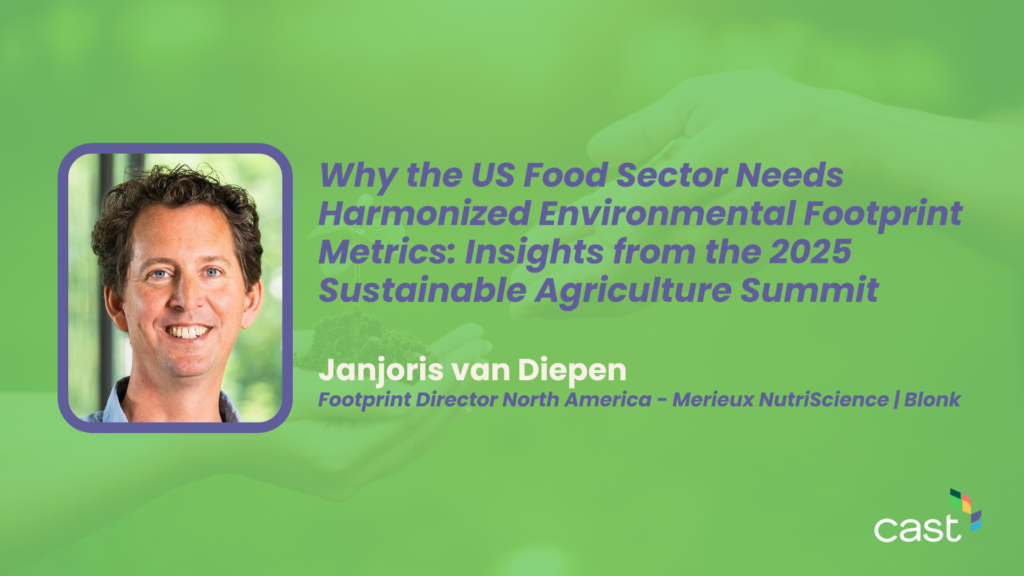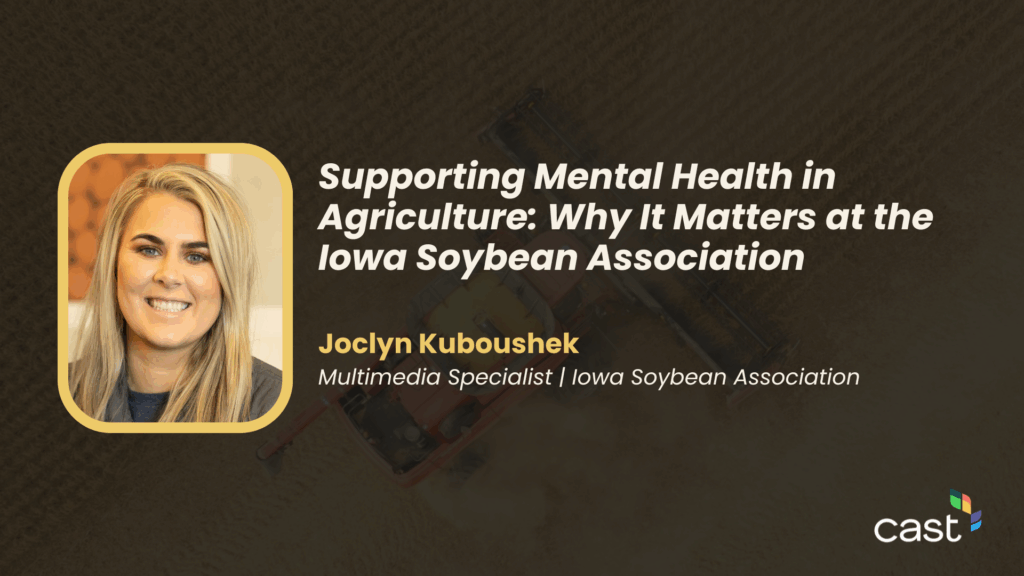By Tom Redick
CAST Representative for American Bar Association, Section of Environment, Energy and Resources | Past CAST President (2015-2016)
Let’s not dance around it. PFAS is the latest chemical scare to hit the ag sector. This one has teeth, but it is manageable. Farmers are being blamed for PFAS contamination they didn’t cause. Regulators are drafting rules based on trace detections that don’t pose real-world risks. And the media? They’re printing stories about “forever chemicals” in our food without distinguishing between real risk and a scientific ghost.
This room knows better; CAST can lead the way to the truth about PFAS. Here’s what you need to know:
- Dose matters.
- The exposure pathway matters. Neither science nor common sense are served when every molecule is treated like a landmine.
PFAS are a large and diverse class of chemicals—around 13,000 of them. Some, like PFOA and PFOS, were used decades ago in industry but are mostly phased out in the U.S. Of course, they persist in soil and water. But most PFAS used today are short-chain, less bioaccumulative, and functionally very different the large chain PFAS we banned.
Many PFAS are essential. They’re used in solar panels, in medical implants, in semiconductor manufacturing, and in controlled-release agricultural products. Without them, we lose critical technology. PFAS is irreplacable in many green products, including wind turbines, solar panels, and EV systems. And the vast majority of these substances are used in closed systems where environmental release is negligible.
This nuanced view of PFAS doesn’t make headlines, unless it is a nuclear bomb or the next I-Phone using PFAS.
So here we are. Agriculture is now a target because PFAS can be found—barely—in food and water, especially in areas that used biosolids from PFAS-affected municipal waste streams. But let’s get real: these detections are in parts per trillion. That’s like finding three seconds of time in a million years.
Let me be clear: we must protect public health. But we must also protect the food system from alarmism. Broad policies not grounded in real exposure risk could devastate farms unnecessarily. That’s where science-based leadership from land-grant universities and organizations like CAST can make a difference.
We need a three-part approach:
- Targeted Testing – Not every farm needs to be testing for PFAS, but those near known risk zones should evaluate biosolids, compost, and irrigation sources. Voluntary baseline testing builds trust and demonstrates transparency.
- Communication with Context – If a PFAS detection occurs, we need to put that data in perspective. Is it a part-per-trillion trace? Is it a short-chain compound? Does it exceed any health benchmark? These nuances matter.
- Policy Grounded in Risk, Not Just Hazard – Just because something can be hazardous doesn’t mean it poses risk under actual conditions of use. The dose, the pathway, and the compound all matter. We need lawmakers and regulators who understand the difference.
Every level of PFAS does not pose a health threat.
Still, farmers are being told to stop using biosolids anywhere, to test every drop of water, and to brace for lawsuits. Testing is good defense, but no one need defend a baseless lawsuit. That’s not science—that’s panic.
So how do we push back and find scientific consensus on risk of PFAS?
First, we need to demand risk-based regulation that separate the 13000 PFAS according to their risk. Hazard is what something can do at certain doses. Risk is what it’s likely to do under actual use. We need to understand that all PFAS blood loads are not equal. Second, own the narrative. Work with university extension teams and credible scientists. Get ahead of the media cycle. If PFAS testing is part of your process, publicize it. If you’re switching to PFAS-free inputs, say so. Consumers want transparency, but they also want perspective.
Third, support CAST and others who are championing rational policy. We cannot allow every detection to trigger a farm shutdown. That would not protect the food system—that would destroy it. We owe it to farmers to set reasonable risk standards.
And finally, remember: PFAS are not a moral failing. They do not mean our regulatory system is broken or somehow let us down. Industry made some mistakes with PFAS, and they are paying the price, but farmers should not have to pay for such mistakes.
If we let fear dictate this debate, agriculture will lose and consumers will suffer. But PFAS are just another set of tools. All tools have tradeoffs. We tolerate tradeoff when we drive, fly, and make dinner. And just like any tool, it’s how you use them—and how you manage their risks—that matters. Farms can lose credibility, then their markets, land, and ultimately their livelihoods. But if we lead with science, with clarity, and with confidence—we can protect both public health and the future of farming.
CAST will be publishing an issue paper on PFAS that will sum up the risks, and I look forward to finishing that paper with my co-authors, Mark McDaniel and Jon Entine.
With CAST’s help, farmers will survive this latest scare and keep producing the food that feeds the US and part of the world.
Disclaimer: This article represents the personal opinions of the author and does not necessarily reflect the views or official positions of the Council for Agricultural Science and Technology (CAST), its staff, or its board.
